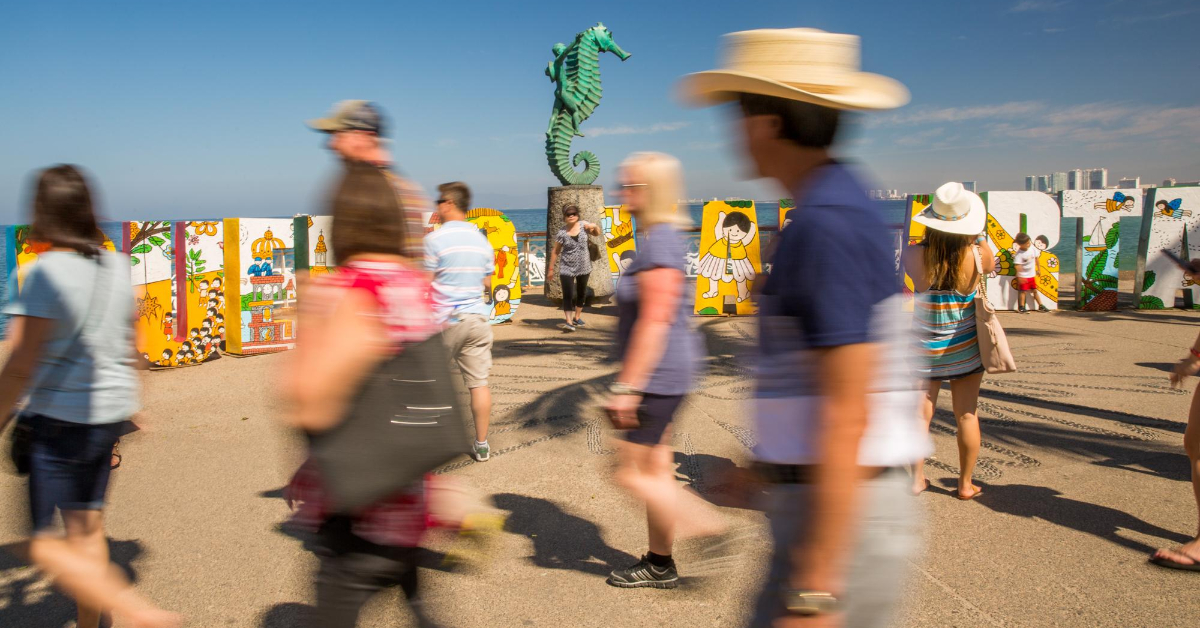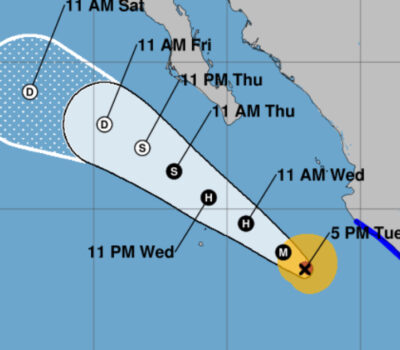Puerto Vallarta, Mexico – Gentrification, driven by urban renewal and mass tourism, is causing more than just economic and cultural displacement—it is also impacting the mental and physical health of residents in affected neighborhoods. This was the focus of discussions at the Forum on Epidemiology, held in Cádiz, Spain, where public health experts raised concerns about the profound effects of these phenomena on the well-being of local populations.
The term gentrification, first coined in the 1960s, refers to the transformation of urban areas, where wealthier individuals move in, leading to the displacement of lower-income residents. While initially affecting central city neighborhoods, this process has now spread to peripheral areas, intensifying its impact. Coupled with mass tourism, or touristification, entire communities are being reshaped, with adverse consequences for those who have called these neighborhoods home for decades.
A Neighborhood’s Transformation Leads to Emotional and Mental Health Struggles
Esther Sánchez-Ledesma, a researcher with the Barcelona Public Health Agency (ASPB), presented findings from a 2018 study on the effect of gentrification and touristification on the health of residents in the iconic Gothic Quarter of Barcelona. Once a vibrant community of approximately 23,000 inhabitants, two-thirds of whom were foreigners, the Gothic Quarter has become a focal point of urban transformation driven by tourism.
Sánchez-Ledesma explained that the residents who participated in the study described a growing sense of alienation. The neighborhood they once knew had become unrecognizable, with small local businesses replaced by tourist-oriented shops and restaurants. The spaces that once served as gathering spots for neighbors were now crowded with visitors, leaving locals feeling like strangers in their own community.
“It’s like being a tourist because you’ve been kicked out of your neighborhood. You feel like a stranger on your own street,” said one 64-year-old resident. Others echoed similar sentiments, speaking of an emotional “grieving process” that comes with witnessing the erasure of their community’s identity. For many, this sense of loss has contributed to increased stress, insomnia, and anxiety, as they struggle to navigate an environment that no longer feels like home.
The Health Costs of Displacement
The displacement caused by gentrification is both physical and symbolic. While some residents are forced to leave due to rising housing costs, others experience what Sánchez-Ledesma describes as “symbolic displacement”—a feeling of disconnection from their surroundings. The loss of familiar social networks and the disappearance of local services exacerbate the sense of isolation, further contributing to mental health struggles.
“If something happens to me, who will care?” asked a 72-year-old resident, expressing concerns about the lack of support systems in a neighborhood increasingly dominated by temporary visitors rather than long-term residents. The challenges extend beyond emotional well-being, with rising costs of housing and services, increased noise, and environmental pollution also affecting residents’ physical health.
According to Sánchez-Ledesma, these changes have led to disrupted sleep patterns and higher levels of anxiety. The constant noise from nightlife, the overcrowding of public spaces, and the relentless presence of tourists have created an environment that fosters stress. Many long-term residents feel trapped, facing the impossible choice of staying in a neighborhood that no longer meets their needs or moving to more affordable areas, where they may lack the same sense of community.
The Health Impact of Urban Environments
The forum also highlighted the broader health implications of urban planning. Juan Antonio Córdoba, a representative from the Andalusian Health Service, emphasized the connection between neighborhood conditions and public health outcomes. He noted that improvements in urban environments are directly linked to reductions in mortality rates and the incidence of chronic conditions such as diabetes, heart disease, and stroke.
Córdoba cited studies that show stark differences in life expectancy based on the quality of urban infrastructure and services. In Cádiz, for example, residents of wealthier areas live up to eight years longer than those in more economically depressed neighborhoods. In Barcelona, the difference in life expectancy can be as much as 11 years between the city’s most affluent and most deprived areas.
“Health must be integrated into urban and territorial planning,” Córdoba urged, calling for greater collaboration between public health officials and urban planners to ensure that communities are built and maintained in ways that prioritize the health and well-being of residents. This includes considering the availability of green spaces, access to healthcare, and the impact of noise and pollution on mental and physical health.
A Global Challenge
While the forum focused on the experiences of cities in Spain, the issues raised resonate with urban communities around the world. Gentrification and touristification are not limited to Europe; they are global phenomena reshaping cities in North America, Latin America, and beyond. In cities like Puerto Vallarta, Mexico, rising real estate prices and the influx of foreign tourists and expats are creating similar tensions.
As these processes continue, residents in affected areas face increasing challenges, from finding affordable housing to maintaining their cultural identity. The health consequences are becoming clearer, with the stress of displacement and the deterioration of social cohesion taking a toll on both mental and physical well-being.
The forum’s experts called for a more holistic approach to urban development—one that balances the economic benefits of tourism and urban renewal with the needs of local populations. By prioritizing the health of residents and preserving the character of neighborhoods, cities can avoid the negative consequences of unchecked gentrification and ensure that all inhabitants, not just the wealthiest, can thrive.
The growing body of evidence suggests that gentrification and mass tourism are more than just social and economic issues—they are public health crises. As cities continue to evolve, the challenge will be to find solutions that protect the well-being of residents while promoting sustainable development. Without such measures, the emotional, mental, and physical health of those left behind will continue to deteriorate, as neighborhoods transform into spaces that serve tourists rather than the communities that built them.
Puerto Vallarta, Mexico - Gentrification, driven by urban renewal and mass tourism, is causing more than just economic and cultural displacement—it is also impacting the mental and physical health of residents in affected neighborhoods. This was the focus of discussions at the Forum on Epidemiology, held in Cádiz, Spain, where public health experts raised concerns about the profound effects of these phenomena on the well-being of local populations.












